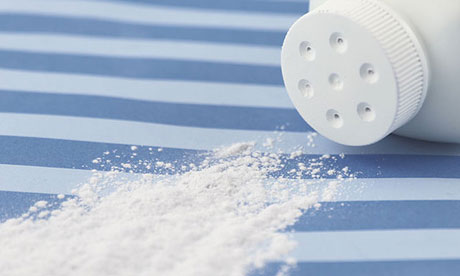
Traditionally used on babies' bottoms and by older women, talcum powder is a soft, sweet-smelling way of keeping skin dry and avoiding rashes. Yet it may have more troubling effects. Research has been rumbling on for more than a decade, looking at whether the talc in talcum powder can cause cancer. Last week a study pooling the results of eight research papers involving almost 2,000 women found an increased risk of between 20% and 30% for ovarian cancer in women who used talc for what some newspapers reporting the study call "intimate personal hygiene" but doctors call the genital area. So should we stop dusting talc?
The solution
The talc in talcum powder comes from the crushing, drying and milling of mined talc rocks and contains minerals such as magnesium and silicon. Such products used to contain asbestos (which causes mesotheliomas – rare cancers of the tissues around the lungs). Now all talcum powder is free of it, although it still has minute fibres that take years to dissolve.
Talcum powder absorbs moisture and reduces friction – which is why it protects skin. It can also travel, and is easy to inhale when you're pouring it on. When applied to the genital area it travels through the vagina, into the uterus and along the fallopian tubes to the ovaries.
To find out if a substance causes cancer, evidence usually comes from studies on animals (in this case tests on mice and hamsters have not been conclusive) or from comparing rates of cancer in two groups of people, one group exposed to the talc and one who have not been. This study, in Cancer Prevention Research, does not find a direct link between how much talc was used and the risk of cancer: use ranged from daily to occasional.
It does, however, support other work, such as an analysis in 2003 combining data from 16 studies, which found a 30% increase in ovarian cancer among talc users. Studies tend to show that only certain types of ovarian cancer are increased. Overall, however, the risk is likely to be small. An average woman's lifetime risk of ovarian cancer is less than 2% so a 30% increase would only marginally raise this figure. The International Agency for Research on Cancer, part of the World Health Organisation, classifies talcs as "possibly carcinogenic to humans" based on studies of genital use.
I'm not a fan of talc but it's likely to be a very small health risk. However, avoid applying it to your underwear or sanitary towels to prevent prolonged exposure. Whether you still want to dust your baby's bottom with it is up to you – but I would just dry thoroughly.

